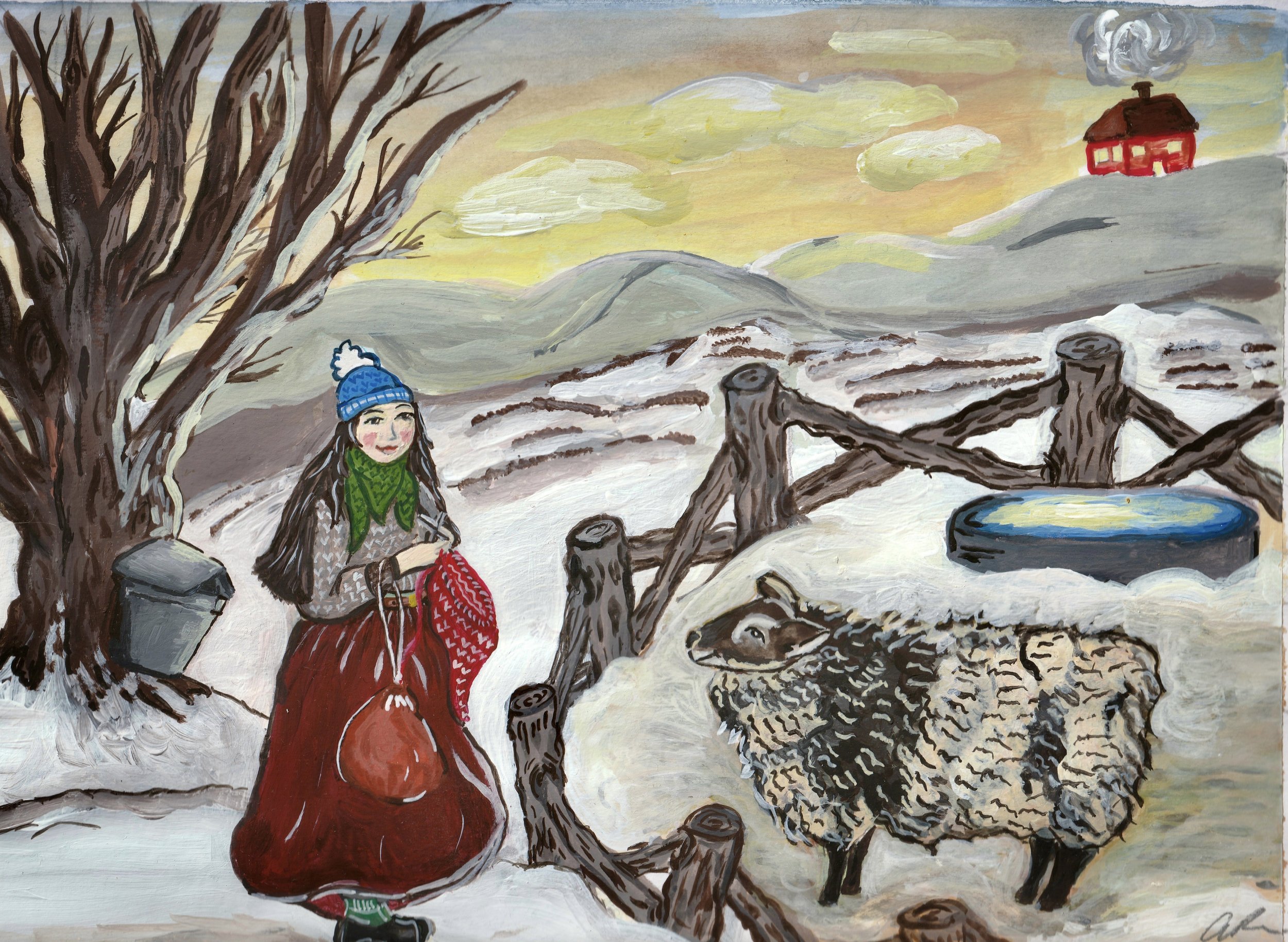The Lap Desk Series: Week 4
I’m playing catch up with my blog posts on the lap desk series, so although I’m painting Week 7’s illustration, I’m here to talk about Week 4 “Local Fibershed.”
So often, I think we’re rather disconnected from where our textiles originate. The fact is, someone along the way made them, and if it’s a natural fiber, there was an animal or a plant that was cared for, grown, and harvested. I am a huge proponent of trying to eliminate plastic use in our household and in my garment wearing life. Plastic fabrics don’t breathe like natural fibers do. Polyester in the summer? Who thought of that terrible idea? I often find that even clothing that is considered “high-end” is still fast fashion that utilizes a ton of synthetic fiber and is produced cheaply and unethically. Like our food, shouldn’t we know how our clothing is produced and where it comes from?
I probably can dedicate an entire lengthy blog post about the meaning of slow fashion in my life, my year-long journey towards achieving a handmade wardrobe, and how I incorporate minimal and zero waste aspects into our daily life, but for now I’ll leave you with a great book resource that focuses more specifically on that this painting is about: Fibershed: Growing a Movement of Farmers, Fashion Activists, and Makers for a New Textile Economy. You can read my review for the Small Farmer’s Journal on the book here.
This painting is entitled “Local Fibershed.” What is a fibershed? It comes from a term we see a lot when describing regional ecosystems and agricultural systems such as watershed and foodshed. It looks at the local system of a region’s waterways or food production and how those particular elements are cyclical within a region’s water and food use. The same can be applied to textiles. Fiber and textile production is inherently an agricultural commodity, and yet it seems in our contemporary society we have lost the basic understanding that the clothing we wear comes from tending earth. I think when we step outside of the bounds of that relationship with earth, we start to see issues arise - I’m speaking more about the use of petrochemicals in clothing manufacturing, exploitation of labor practices, and the carbon footprint of shipping inexpensive clothing from overseas. A local fibershed focuses on the production of clothing material from soil to garment within a region’s community. The nature of a fibershed means artists, makers, farmers, designers, and local businesses are all engaged. If you’re curious to learn more, check out the non-profit Fibershed.
The painting
In this painting I chose to represent that relationship between animal, land, and maker. Andrea is knitting with wool as she visits the shetland sheep whose fleece was used to make the sweater she is wearing. This is why the sweater was painted in a similar color to the sheep’s natural fleece. I really wanted to illustrate the beauty and importance in being able to see where your fiber comes from. Witnessing the care and the landscape where something you can produce yourself was grown. It’s very important to me, and while I recognize the cost of these local supplies is high, I believe that solutions should be implemented to ensure access to local resources so people don’t have to be dependent on cheap commodities. I recognize there is centuries of capitalist expansion at play here, but don’t despair! Telling the stories, engaging the farmers, meeting makers, trying your hand at a skill or two are all acts of resilience in preserving local fiber sheds and access to handmade living.
I digress again - let’s go to process quickly.
The Process
That sunset! I loved painting that. I loved placing the light on the maple bucket and working hard to create that sunset glow you get in midwinter. Painting this piece was an absolute delight and brought a few challenges with figuring out how I wanted to create the wool’s texture on the sheep and filling in the pen and the snow with pieces of hay and soil required a lot of layering. Overall I’m quite pleased with this piece.
Now a cat is on my lap and I can’t type anymore. I’ll leave it here as more content than process for this painting. As always, it’s available as an 8”x10” print on the website for a limited time. March 4th, 2024 is the last day to order a giclee print before the listing is closed for the foreseeable future.
Andrea

